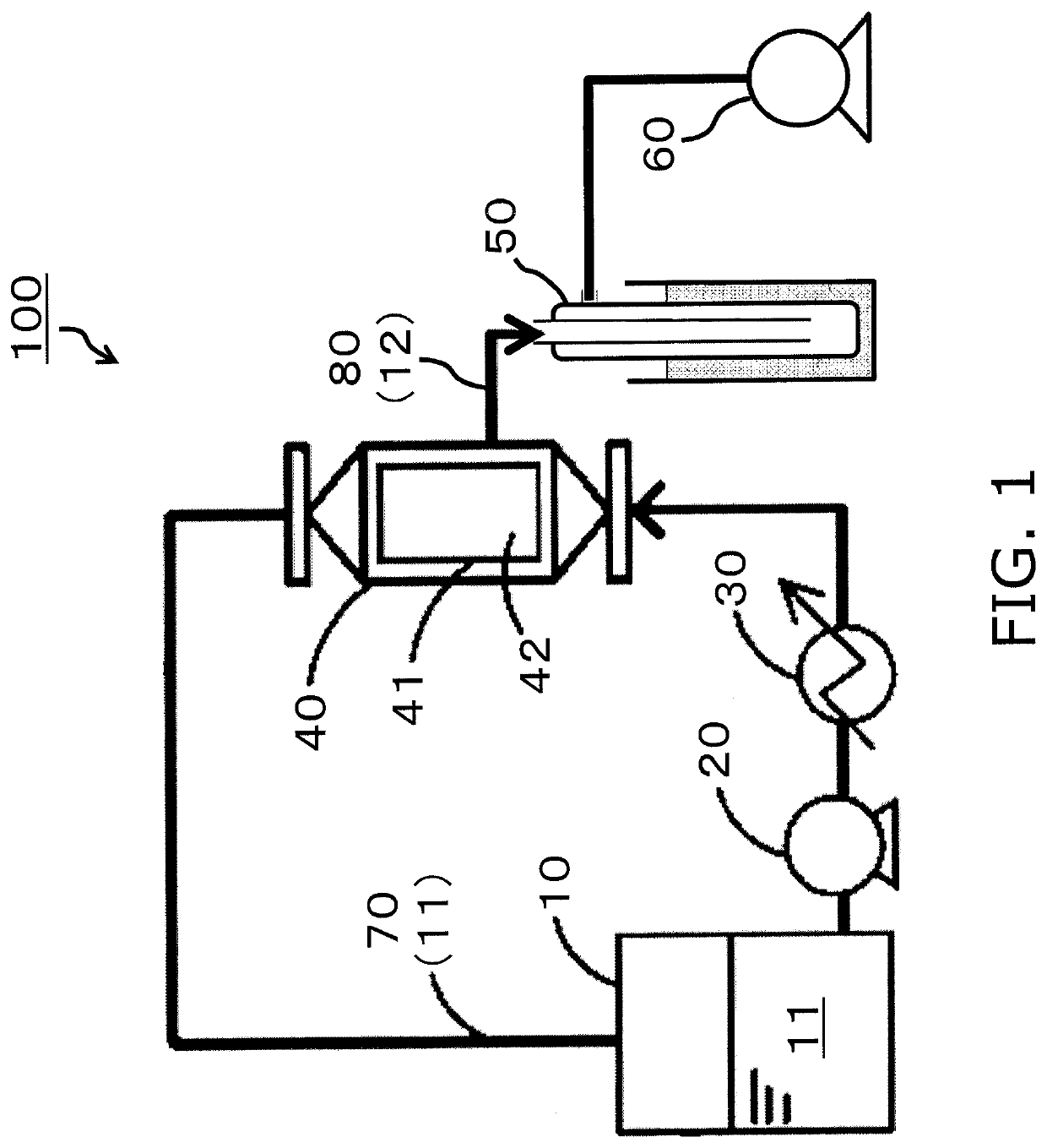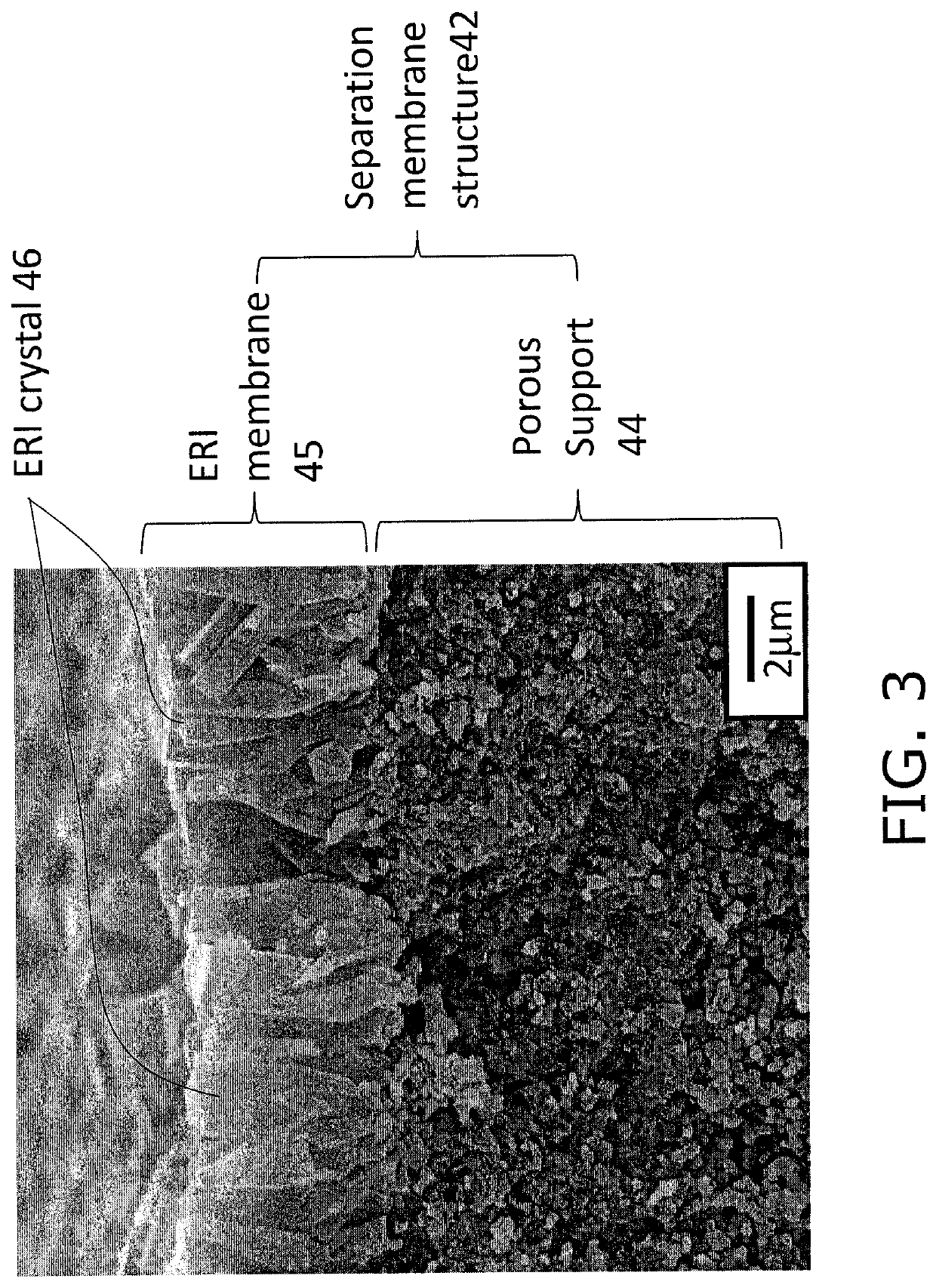Dehydration method and dehydration apparatus
a dehydration method and dehydration apparatus technology, applied in the direction of membrane technology, water treatment parameter control, crystalline aluminosilicate zeolites, etc., can solve the problems of dehydration performance degradation, insufficient separation performance, and inferior heat resistance and chemical resistance of organic membranes, so as to suppress the degradation of dehydration performance
- Summary
- Abstract
- Description
- Claims
- Application Information
AI Technical Summary
Benefits of technology
Problems solved by technology
Method used
Image
Examples
example 1
[0087]1. Production of Porous Support
[0088]A monolith-shaped compact having a plurality of through holes was formed with use of a green body containing an alumina raw material and an extrusion molding method, and then was fired.
[0089]Then, a porous layer including alumina as a main component was formed on surfaces of through holes of the fired compact, and the resulting compact was fired again to form a porous support. A surface of a portion of the porous support on which a membrane was to be formed had an average pore size of 65 to 110 nm.
[0090]2. Production of Seed Crystals
[0091]A starting material solution having a composition of 1 Al2O3:1.3 P2O5: 1.4 SDA: 130 H2O was prepared by dissolving, in pure water, aluminum isopropoxide, 85% phosphoric acid, and N,N,N′,N′-tetramethyldiaminohexane (TMHD), which is a structure-directing agent (SDA).
[0092]Then, the starting material solution was introduced into a pressure vessel, and hydrothermal synthesis (195° C., 30 hours) was performed.
[...
example 2
[0114]1. Production of Porous Support
[0115]A porous support was produced in the same process as that of Example 1.
[0116]2. Production of Seed Crystals
[0117]ERI seed crystals were produced in the same process as that of Example 1.
[0118]3. Formation of ERI Membrane
[0119]An ERI membrane was synthesized in the same process as that of Example 1, except that the composition of the starting material solution was changed to 1 Al2O3:2.0 P2O5:3.0 SDA:210 H2O, and hydrothermal synthesis was performed at 170° C. for 50 hours. In the starting material solution of
[0120]Example 2, the H2O / T atom ratio was 35, and the N atom in the SDA / T atom ratio was 1.0.
[0121]Then, the synthesized ERI membrane was sufficiently washed with pure water, and was completely dried at 90° C.
[0122]Then, SDA was burned off by heating the ERI membrane at 450° C. for 50 hours so that pores extended through the ERI membrane.
[0123]4. Separation Durability Test
[0124]A separation test was performed in the same manner as that o...
PUM
| Property | Measurement | Unit |
|---|---|---|
| velocity | aaaaa | aaaaa |
| velocity | aaaaa | aaaaa |
| temperature | aaaaa | aaaaa |
Abstract
Description
Claims
Application Information
 Login to view more
Login to view more - R&D Engineer
- R&D Manager
- IP Professional
- Industry Leading Data Capabilities
- Powerful AI technology
- Patent DNA Extraction
Browse by: Latest US Patents, China's latest patents, Technical Efficacy Thesaurus, Application Domain, Technology Topic.
© 2024 PatSnap. All rights reserved.Legal|Privacy policy|Modern Slavery Act Transparency Statement|Sitemap



